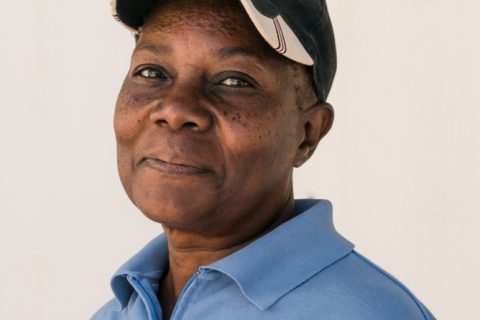Abidjan – Between the appeal of modernity and the preservation of culture

Upon arrival in Abidjan, we are greeted by the heat that, combined with the extreme humidity, confirms that we have just landed in a tropical destination. An argument that promises to take many tourists to Côte d’Ivoire, a country that is now beginning to attract the attention of travelers and adventurers. Away from the usual tourist itineraries, Côte d’Ivoire holds within its borders unique, little explored attractions, from tropical forests to wild beaches where tranquility is guaranteed by the curtains of palm trees that separate them from the rest of the world – and the average water temperature of the the sea is around 27 degrees celcius
Advertising

With an estimated population of more than five million inhabitants, Babi, as they call it, is a large African metropolis, one of the most modern cities in West Africa, sown on the islands and islets that decorate the banks of the great Ebrié Lagoon and the small lakes that accompany it on the improbable map of the city that developed mainly after Independence in 1960, extending into the continent. Connected by bridges and river transportation – the most unique way of traveling on the calm waters – the various municipalities in the city, which in recent years has undergone a series of restoration works, hide secrets along the urban layout and its surroundings.

Home to six dozen different ethnic groups, Côte d’Ivoire respects their traditions and habits.
The wide streets flanked by skyscrapers that earned it the nickname “African Manhattan” coexist with the narrower streets of the neighborhoods that are home to the majority of the population, both full of life, color and fun. We let ourselves be enchanted by the color of women’s clothing, while trying to resist the heat of Ivorian rhythms, such as the Coupé-décalé, or the more recent Zouglou and Zoblazo, which conquer the young and invade the streets, filled with the smell of cocoa, fresh bread and fruit sold in the street markets to which we immediately surrender. In this adventure for the senses, we visit a typical Maquis, an “improvised” local restaurant, where we refresh ourselves with ginger beer and taste the local cuisine, trying the popular and spicy kedjoneu (a chicken stew, usually accompanied by finely grated cassava, resembling the couscous).
We set off to discover the Plateau peninsula, the financial center that impresses with its architecture, be it the skyscrapers, the Cathedral of São Paulo or the Great Mosque, two temples that end up reflecting the spirit of the city, inhabited by Christians, Muslims and animists, who live together maintaining their cultural identity. Home to six dozen different ethnic groups, Côte d’Ivoire respects their traditions and habits, which are showcased in the Museum of Civilizations, whose collection tells us about history, folklore, art, music or crafts, helping to better understand the country.

Unifying this ethnic variety is a true national passion: football.
Unifying this ethnic variety is a true national passion: football. The homeland of heroes of the pitches Didier Drogba, Yaya Touré and Youssouf Fofana vibrates with their national team, whose “home” could not be located anywhere else than in the prime area of the main city. And what happens at the Felix Houphouet-Boigny Stadium is followed live by the entire population wherever there is a television set or a radio, and on match days the festive and anticipatory atmosphere is felt in all the streets and alleys.
We do not miss the exclusive residential area of Cocody, an area of embassies and modern shops and boutiques owned by national designers (from clothing to furniture), but with our thoughts on art galleries and craft shops where we look for genuine souvenirs. The same craft that justifies a visit to Treicheville, where “the streets have no names”, but have numbers instead, and where we discover, in addition to the famous national chocolate shops, the exotic Floating Island, a space built from garbage, in an original idea that raises awareness about the problem of pollution.
They point us to the Palace of Culture, which immediately takes us to MASA (Abidjan Performing Arts Market), a festival created to promote cultural development for African performing arts and the largest of its kind in the entire continent, which fills the city with life and art. It will be the most outstanding event in a city that is used to receiving other festivals, such as FESNACI (Côte d’Ivoire National Festival of Cinema), the Abidjan World Music Festival, or the more modern FEJA (Festival of Electronics and Video Games), a platform for the development of the videogames industry in Africa, or the Africa Web Festival, which brings together personalities to reflect on the continent’s destinations in an increasingly digital world.
Edição 84 SET/OUT| Download.



































0 Comments